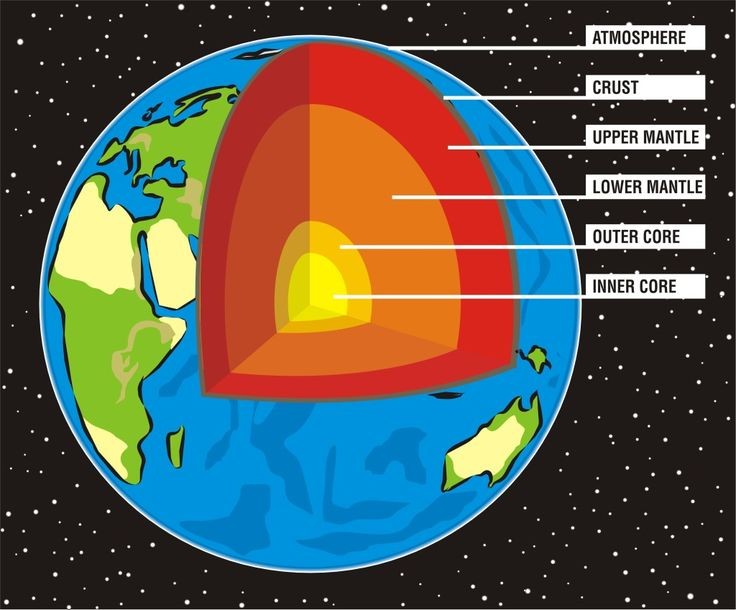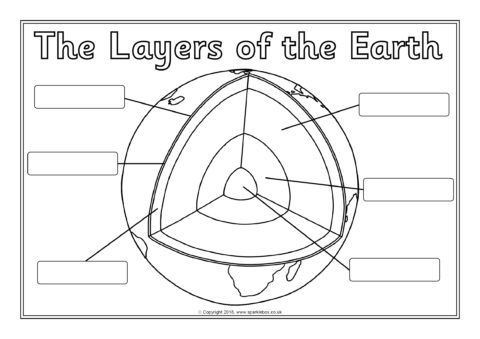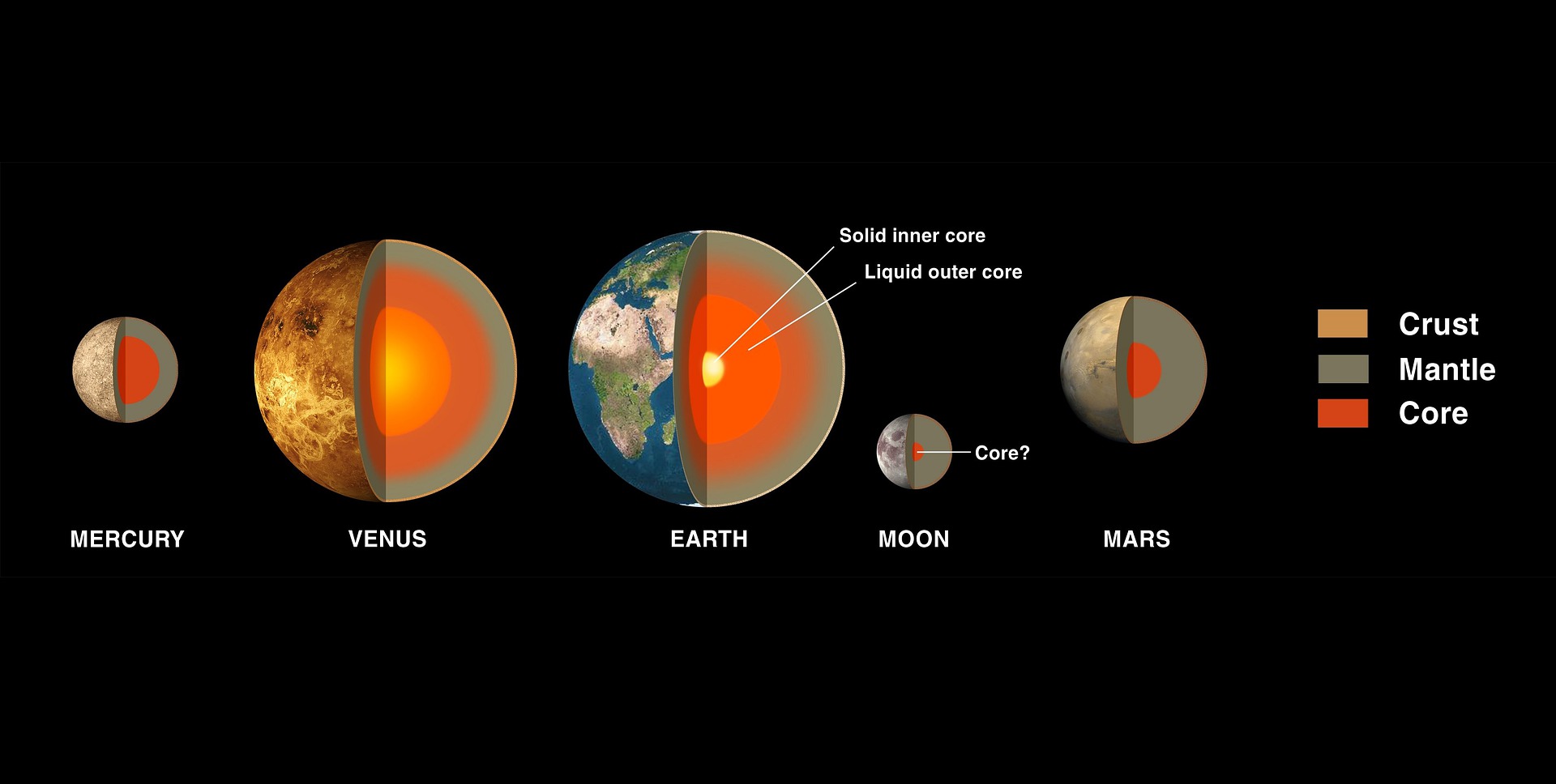Home > Sections > Earth > Earth's Structure
Last Updated: 14th June 2023
ARCHIVED ITEM: this page is no longer updated.
Earth's Structure
Keywords
Crust, upper mantle, lower mantle, inner core, outer core, tectonic plates, Earth, planet, magma, layers.
Introduction
We know Earth as being a round, spherical celestial body in the universe, the third planet from the Sun. We also know that Earth has a complex structure within it. From this, we know that if we were to dig down to the middle of the Earth, it would be very hot.
Let's look at the Earth's internals a bit closer.
Layers
There are several layers to the Earth, including:
- The crust
- The upper mantle
- The lower mantle
- The outer core
- The inner core
These layers all have a purpose, which are explained below.
But first, a YouTube video from MooMoo Maths and Science:
The Crust
This is the topmost layer of the Earth, and it where we live. Although it includes the soil at the top of it, the crust is actually 25 miles deep, which accounts for about 1% of the entire mass of Earth. It is mostly considered to be brittle, as the rest of the Earth's structure is solid rock, or molten rock and materials.
The crust was made after the planet formed, and is the coldest part of the Earth's structure. Having said that, it supports all forms of life, who prefer the temperature to be this way.
The Mantles
The upper mantle is the next layer. This, combined with the lower mantle, is a giant mass of 1,802 miles thick, which is 84%. It comprises of silicates, which are substances of silicon and oxygen. This includes materials such as olivine, garnet and pyroxene. There is also magnesium oxide, which is one of several other elements like iron, aluminium, calcium, sodium and potassium.
The temperature of the mantle ranges between 1,000° Celcius, up to 3,700° Celcius, which is situated nearer the core.
The further you go into the planet and specifically the mantles, the higher the pressure and heat get. If you were to build a lift shaft all the way through the planet, not only would you die, but your body (or whatever's left of it) would bounce around the middle a few hundred times, before possibly being sent one of the two directions away from it. This is because of a magnetic field within the core.
The Cores
Now you've reached the middle of the Earth. The outer and inner core are so hot, we would not survive it, at all. The structure of the core is not as old as Earth itself, as the planet was once an entire ball of heat and rock. After about 500 million years, it started to settle as the core we know today. This process was called the iron catastrophe. It allowed bigger and faster movement of Earth's rocky materials. It was the general movement of heavier rocks and metals to move to the centre of the core, and other, lighter materials (such as the silicates in the mantle) to rise up from the core.
The core is mostly made of iron and nickel, and it is molten. The shorthand chemical code for the core is NiFe, after the Nickel and Iron's chemical compound periodic table names.
Interesting fact: up to 90% of the Earth's sulphur is in the core of the planet. This explains why the mass of the core is lighter than originally expected.
Geothermal Gradient
As you descend into the Earth's core, for every kilometre's depth, there is a change in temperature of around 25° Celcius. This is measured by the increase of heat and pressure within the Earth's interior. The reason for the increases in temperature are for several reasons: the decay of radioactive materials, heat leftover from the original formation of the planet, and the heat released from the outer core as the liquid soldifies near the boundary with the inner core.




 Earth
Earth



